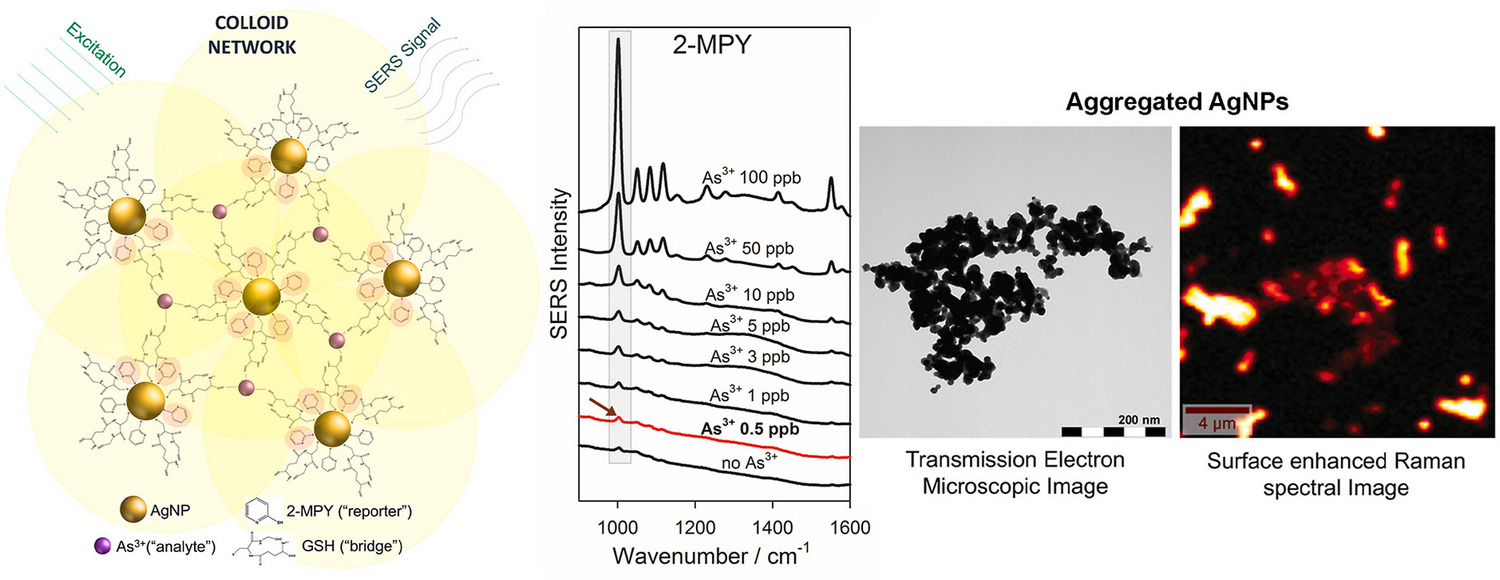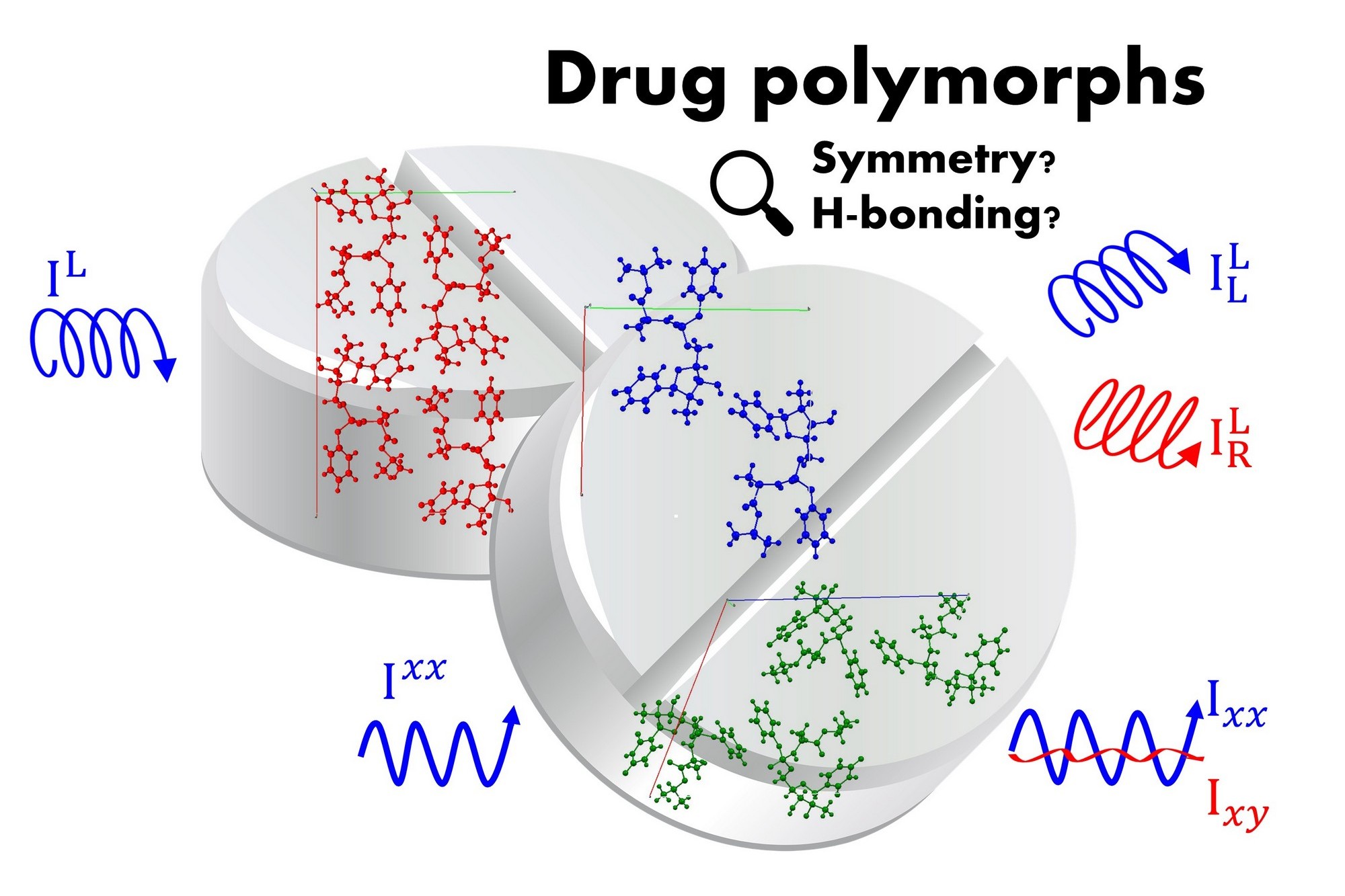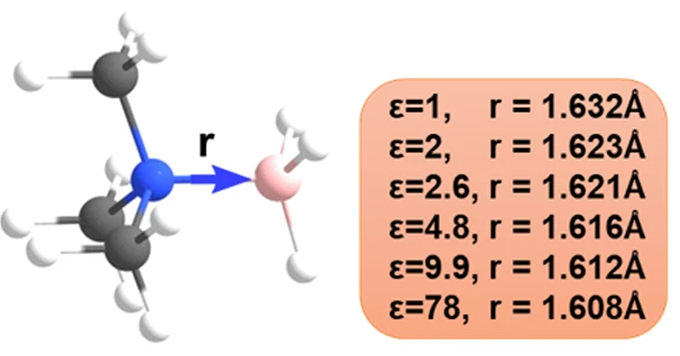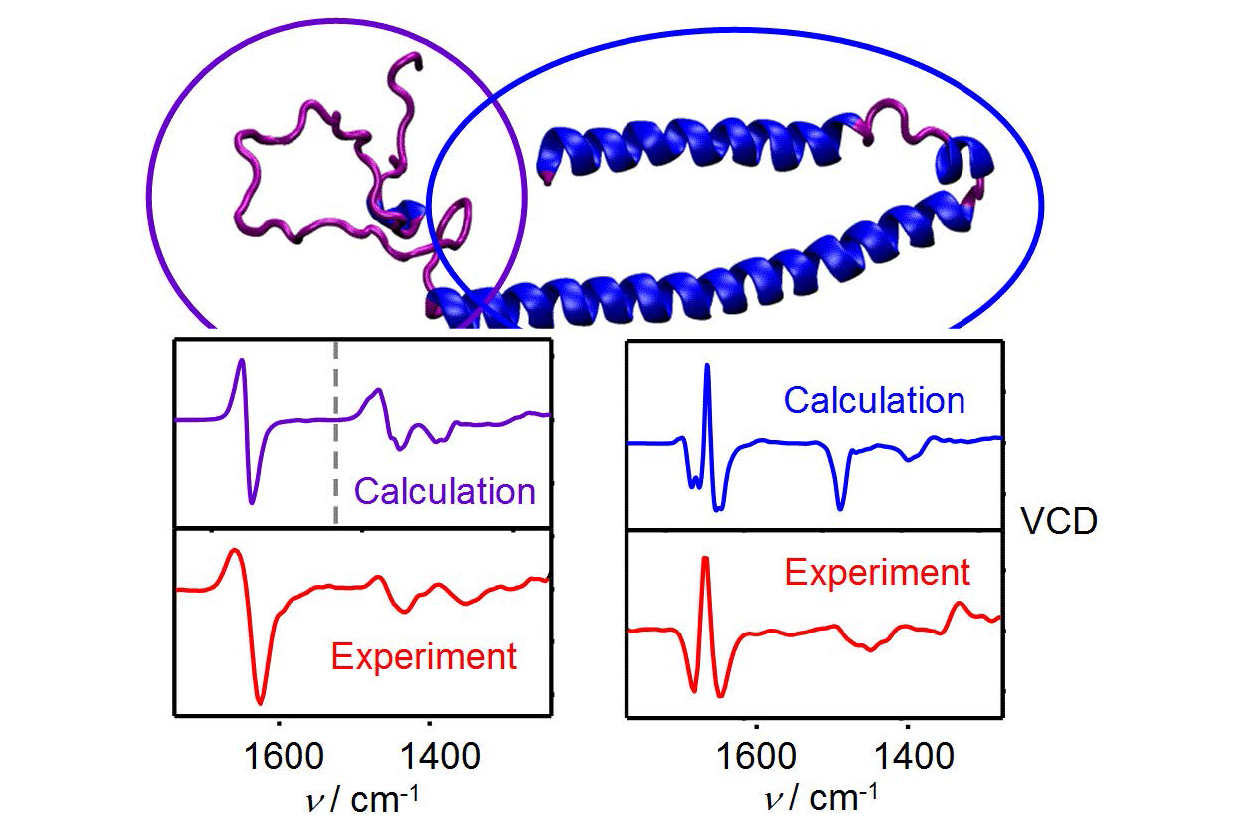
Scientists from IOCB Prague and UCT Prague led by Petr Bouř developed a novel method ultra-sensitive to the presence of arsenic in water. Arsenic compounds are toxic, causing multiple diseases when present in food or beverages. To humans, concentration as low as 10 ppb can already be dangerous. That’s why we need selective and sensitive tools for its detection.
The method is based on modified silver colloids. Arsenic binds to the thiol group and the scientists took advantage of this property to attach it to glutathione, which caused cross-linking of the silver nanoparticles into dense colloidal aggregates.
These aggregates exhibited a strong surface-enhanced Raman scattering (SERS) of the "reporter" 2-mercaptopyridine molecule. This aggregation-aided SERS (AA-SERS) was able to detect arsenic at concentrations as low as 0.5 ppb.
Original article: Das, M.; Gangopadhyay, D.; Pelc, R.; Hadravová, R.; Šebestík, J.; Bouř, P. Aggregation-aided SERS: Selective detection of arsenic by surface-enhanced Raman spectroscopy facilitated by colloid cross-linking. Talanta 2023, 253, 123940. https://doi.org/10.1016/j.talanta.2022.123940






